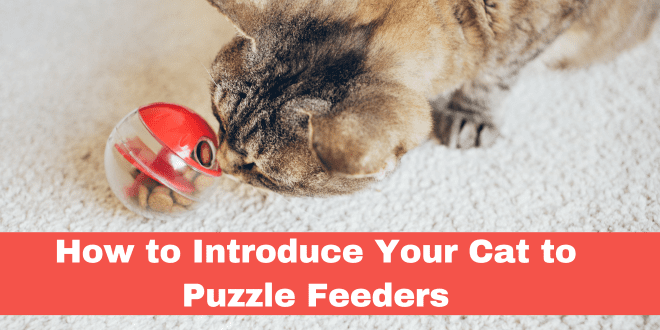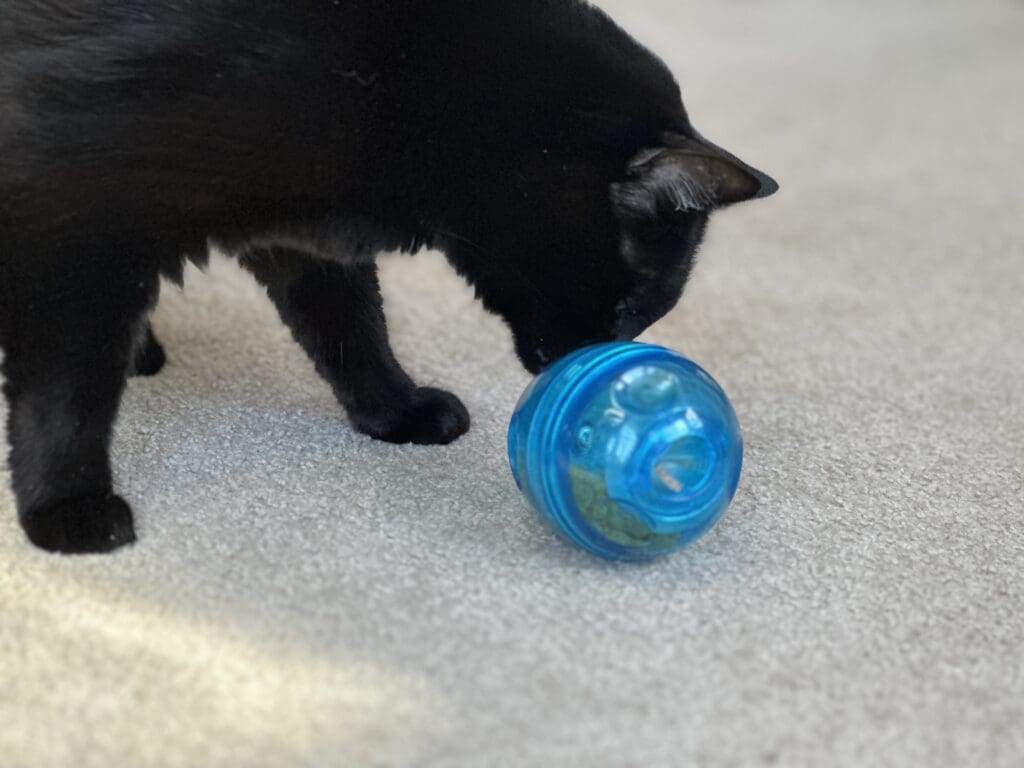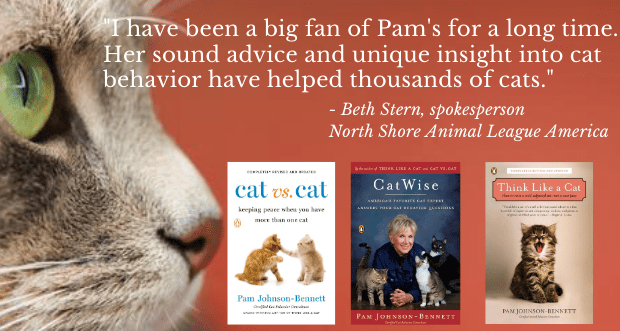
Why Use Puzzle Feeders?
It’s certainly easier to just put food in a bowl but puzzle feeders can provide multiple benefits for your cat. Here are just some of the benefits:
- They help combat boredom or separation anxiety when your cat is alone
- Puzzle feeders encourage a cat to eat slowly
- Stress relief
- Puzzle feeders can assist in weight management
- Helpful in multicat households to distract cats from focusing too much on each other
- Constructive outlet for cats who engage in destructive behavior
- Puzzle feeders spark the cat’s instinct to forage and hunt
- Puzzler feeders provide a good brain challenge
Some cats will need absolutely no introduction to the concept of a puzzle feeder and may even manage to master it before you can get your phone out to take a picture of your feline Einstein. However, some cats need guidance on how the puzzle feeder process works. Even though cats are hunters and were born to work for food, mastering a puzzle feeder is different from hunting a mouse in tall grass.
Make it Easy for Your Cat at First
Your cat is used to walking over to the food bowl and seeing a meal conveniently displayed, and now you’re expecting kitty to work for dinner? If you make the introduction easy and avoid frustrating your cat, he’ll very likely find the process to be fun. Cats love to seek, discover, and paw at things. They’re attracted to objects that move, especially when the movement is enticing. If your cat has ever knocked an object off the table or batted a toy on the floor, he can work a puzzle feeder; he just may need a little Puzzle Feeder 101.
Try Various Food-Dispensing Toys
Every cat is an individual and you may find you have to try a couple of different types of puzzles. Just as with toy selection, you may find your cat has specific preferences. If you purchase puzzle feeders, some are designed for beginners and others are labeled level 2 or level 3. Cats are very smart but since this is supposed to be fun, start at the easiest level (whether homemade or purchased food-dispensing toy) and then work your way up. Don’t be discouraged if your cat doesn’t show interest in the first one you try. It may be too difficult, not the right size, or maybe your cat wasn’t hungry enough.
Starting out with a Puzzle Feeder
First, your cat should be hungry but don’t wait until he’s starving because that might lead to frustration as a novice.
The first time you introduce a puzzle feeder it should be as easy as possible for your cat to succeed. If you feed dry food, try using a small water bottle placed on its side and filled with a small portion of your cat’s food or some dry treats. Don’t overfill. Before putting the dry food or treats in the bottle, cut large holes all around the bottle that are much bigger than the size of the food pieces. This way, all your cat must do is basically touch the bottle and he’ll achieve success. You can even place a few bits of food right next to the bottle. When your cat gets close to the food, his nose will touch the bottle and another piece will magically drop out. As your cat becomes move proficient, make smaller and/or fewer holes in the next water bottle so kitty will have to put a bit more effort into accessing the food. Make holes that are always larger than the size of the food piece or else that will most certainly be an exercise in kitty frustration.
If you’d rather purchase a very basic puzzle feeder, try the Petsafe Egg-Cercizer ball. It’s shaped like a large Easter egg and you can control the size of the openings with a simple twist. Most cats get the concept immediately.
For wet food, start out with something like an ice cube tray, egg carton, or a muffin tin. It will get your cat used to the idea of searching in each compartment to forage. The Lickimat by Innovative Pet Products, is a fabulous wet food puzzle feeder. It’s a simple flat mat with raised nubs. Wet food can be embedded on the mat for your cat to lick. When I’m doing consultations and need to redirect two cats when they’re focusing too much on each other, a Lickimat for each is often the perfect method.
For dry food you can also find several commercial puzzle feeders such as the Senses 2.0 Digger by Catit or one of the many puzzle feeders by Nina Ottosson. Do an online search and you’ll find several companies that make puzzle feeders with various designs.
If your cat isn’t showing an interest in the puzzle feeder, try a different type. You may have to experiment with several. If your cat still walks away, try using high-value, super-tasty treats and then transition back to normal food. Don’t overfeed with treats. Treats should make up no more than 10% of your cat’s food intake.
Food Puzzle Toys Should Never Frustrate Your Cat
Don’t push your cat beyond his ability. This is supposed to be fun. Even though a puzzle feeder is meant to work the brain, it’s still supposed to be a game that brings enjoyment to your cat. Some cats will never graduate beyond the most basic food puzzle.

Keep Puzzle Feeders Clean
Even though your cat may get every morsel out of the puzzle feeders, it’s important to wash them after each use. Puzzle feeders can have little bits of food stuck in corners which can lead to contamination. There will also be saliva on the toy that needs to be washed off. Residue or odor of old food may also make the toy unappealing. Discard cardboard puzzle feeders regularly and replace with fresh ones.
Create a Safe Environment When Introducing the Puzzle Feeder
Mealtime, whether it’s by way of a puzzle feeder or a traditional food bowl, should always be a safe and peaceful time for your cat. When you offer the puzzle feeder, it should be in an area where your cat won’t be at risk of an ambush by other companion animals.
In a household with a dog, offer the puzzle feeder in a location where the dog won’t have access. In addition to the stress this could cause the cat, you don’t want a dog eating cat food, and even worse, chewing or swallowing pieces of a puzzle feeder. There are puzzle feeders and slow feeder bowls for dogs as well, so this might be an opportunity to provide some enrichment for the canine member of your family as well.
Need Some Puzzle Feeders ideas?
There are many types of puzzle feeders for purchase (an online search will reveal how popular they’ve become). You can also make homemade ones that cost next to nothing. Egg cartons, ice cube trays, muffin tins, PVC elbows, water bottles, plastic Easter eggs, and even the cardboard centers from paper towel rolls will work. Be creative and you’ll find one or more that your cat will love. Anything that encourages your cat’s natural foraging instinct will work. Just make sure it’s safe and fun! Even if you just divide up your cat’s meal portion, place a little in several small dishes and then scatter the dishes around your cat’s area. This will at least encourage your cat to forage on the most basic level.
Note of caution: Although you can turn many items that are around your house into puzzle feeders, don’t use pill bottles. Plastic pill bottles seem like a natural but I don’t advise this. Your cat may mistake an actual prescription bottle of pills for a puzzle feeder. This is a mixed message you don’t want to send. Stick to safe items.
Need More Information?
For more information on cat behavior and training, refer to the books by best-selling author, Pam Johnson-Bennett. Pam’s books are available in bookstores and online. We’ve included links to Amazon on our website.
If you have a question about your cat’s behavior or health, contact your veterinarian. This article is not intended as a medical diagnosis nor is it a replacement for your cat’s regular veterinary care. This article is for general information purposes only.



